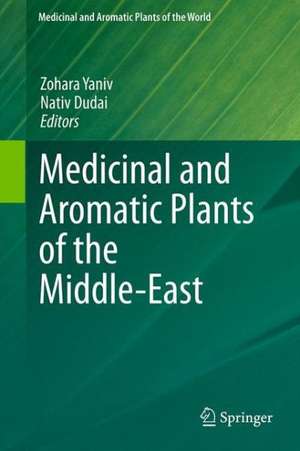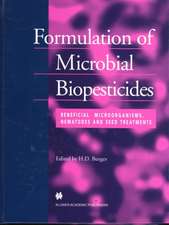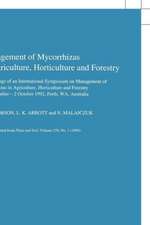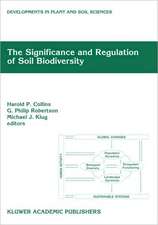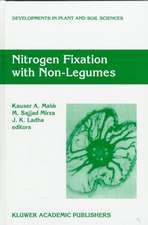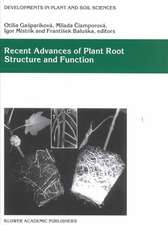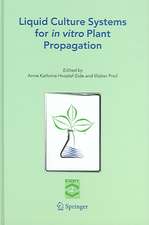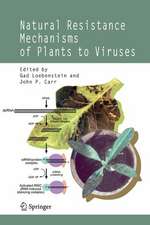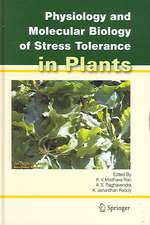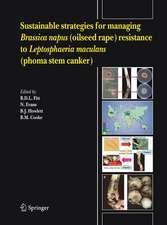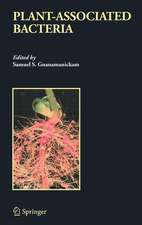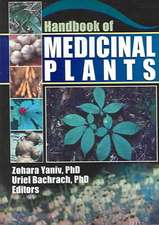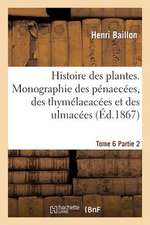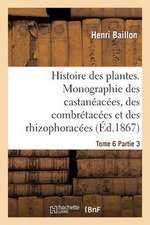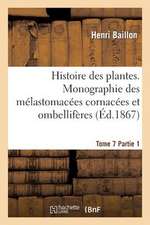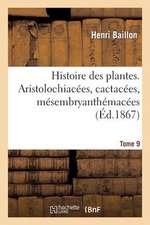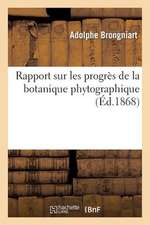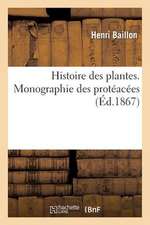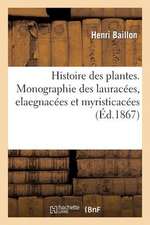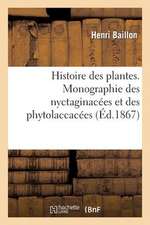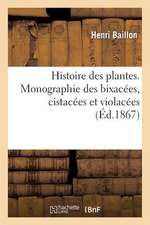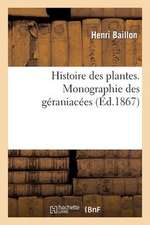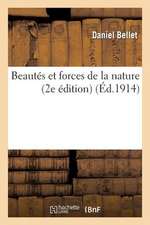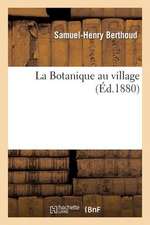Medicinal and Aromatic Plants of the Middle-East: Medicinal and Aromatic Plants of the World, cartea 2
Editat de Zohara Yaniv, Nativ Dudaien Limba Engleză Hardback – 22 sep 2014
| Toate formatele și edițiile | Preț | Express |
|---|---|---|
| Paperback (1) | 947.18 lei 6-8 săpt. | |
| SPRINGER NETHERLANDS – 22 sep 2016 | 947.18 lei 6-8 săpt. | |
| Hardback (1) | 953.03 lei 6-8 săpt. | |
| SPRINGER NETHERLANDS – 22 sep 2014 | 953.03 lei 6-8 săpt. |
Preț: 953.03 lei
Preț vechi: 1162.23 lei
-18% Nou
Puncte Express: 1430
Preț estimativ în valută:
182.38€ • 198.04$ • 153.20£
182.38€ • 198.04$ • 153.20£
Carte tipărită la comandă
Livrare economică 22 aprilie-06 mai
Preluare comenzi: 021 569.72.76
Specificații
ISBN-13: 9789401792752
ISBN-10: 9401792755
Pagini: 337
Ilustrații: X, 337 p. 81 illus., 39 illus. in color.
Dimensiuni: 155 x 235 x 20 mm
Greutate: 0.66 kg
Ediția:2014
Editura: SPRINGER NETHERLANDS
Colecția Springer
Seria Medicinal and Aromatic Plants of the World
Locul publicării:Dordrecht, Netherlands
ISBN-10: 9401792755
Pagini: 337
Ilustrații: X, 337 p. 81 illus., 39 illus. in color.
Dimensiuni: 155 x 235 x 20 mm
Greutate: 0.66 kg
Ediția:2014
Editura: SPRINGER NETHERLANDS
Colecția Springer
Seria Medicinal and Aromatic Plants of the World
Locul publicării:Dordrecht, Netherlands
Public țintă
ResearchCuprins
Forward.- Chapter 1: Medicinal Plants in ancient traditions.- Chapter 2: Wild Edible Plants in Israel Tradition versus Cultivation.- Chapter 3: Ethnobotany among Bedouin tribes in the Middle-East.- Chapter 4: Selected Aromatic-Medicinal Plants, Endemic to the Middle-East.- Chapter 5: Capparis spinosa, The Plant on the Wall.- Chapter 6: Apharsemon, Myrrh and Olibanum: Ancient Medical Plants.- Chapter 7: Sarcopoterium spinosum.- Chapter 8: Traditional uses of Pistacia lentiscus in Veterinary and Human Medicine.- Chapter 9: Farming Amphetamines: Khat (Catha edulis Forsk) a Traditional Plant with Psychoactive and Medicinal Properties.- Chapter 10: Citron Cultivation, Production and Uses in the Mediterranean Region.- Chapter 11: Therapeutic Use of Aleppo Pine (Pinus halepensis Mill.).- Chapter 12: Pomegranate: Aspects Concerning Dynamics of Health Beneficial Phytochemicals and Therapeutic Properties.- Chapter 13: Juniperus phoenicea from Jordan.- Chapter 14: Myrtle (Myrtus communis L.) A Native Mediterranean and Cultured Crop Species.- Chapter 15: Eruca sativa: A Tasty Herb Salad with Health Promoting Properties.- Chapter 16: Rose Oil (Rosa damascena).- Chapter 17: Opium Poppy (papaver somniferum).
Recenzii
“This book will be particularly gratifying to readers interested in truly effective medicinal plants. … Because of the emphasis on bioactive compounds with documented effective usage, this book will be extremely helpful to those who need a practical, focused ethnobotanical text. Summing Up: Recommended. All academic, general, and professional library collections.” (L. Swatzell, Choice, Vol. 52 (9), May, 2015)
Notă biografică
Zohara Yaniv, is Prof. Emeritus at the Agricultural Research Organization. She Received her PhD from Columbia University in New York (1967) and worked for several years as a researcher at the Institute for Plant Research Boyce Thompson Center at Yonkers, NY, on topics related to biochemical control of parasite relations -host. Dr. Yaniv is an international expert on medicinal plants. Particularly interested in folk medicine related, conventional and renewable ancient cultures in the modern world. Her research work focused on ethnic botanical research of the Middle East and Israel. It also dealt with the study of vegetable oil health value crops, such as a rich source of vegetable oil omega-3 fatty acids. Her works are documented in numerous international publications. Dr. Yaniv is also the co-editor of few books: - Medicinal plants of Israel (1991 - in Hebrew, 2000 - English) - Herbs - Complete Guide to medicinal plants with drugs to disease incidence (1995). - Handbook of Medicinal Plants (2005).
Textul de pe ultima copertă
Plants have been known and cultivated for their therapeutic properties in the Middle-East throughout recorded history and most likely – beyond that. With the progress of science, they continue to be cultivated and collected for both traditional and innovative purposes.
This volume: "Medicinal and Aromatic Plants of the Middle-East" offers the most comprehensive and up-to-date information on medicinal plants and their increasing importance as cultivated crops, or as plants with significant potential to become crops in this important region.
In 17 chapters of meticulous research, this unique volume explores history, taxonomy, ecology and biodiversity, cultivation and breeding, agronomy and medicinal properties.
Written by leading scientists, this volume includes:
The history of medicinal plants used by our ancestors during the early periods of civilization, especially in the Near-East;
The use of plants for producing health products (pomegranate, pine), pharmaceutical drugs (khat for natural amphetamines, opium poppy, Myrtle); nutrition and food products: (Eruca sativa, citron,) herbs and spices (oregano, sages,) cosmeceutical products and perfumes (rose oil, apharsemon, myrrh and olibanum), liqueurs (Myrtus communis) and many more;
Traditional plants used by Bedouin tribes in the Middle-East;
The use of edible wild plants in tradition and as future health foods
The use of Pistacia in veterinary as well as in human medicine;The presentation of a native plant from Jordan: Juniperus, with its traditional and promising modern studies;
Some important traditional medicinal plants with great potential (Capparis spinosa, sacropoterium spinosum)
From poppy and rose-oil to khat and citron this volume highlights issues relevant to the collection, conservation, cultivation, production and utilization of a selection of unique medicinal and aromatic plants, with demonstrated promise for the benefit of society-especially in the 21st century.
This volume: "Medicinal and Aromatic Plants of the Middle-East" offers the most comprehensive and up-to-date information on medicinal plants and their increasing importance as cultivated crops, or as plants with significant potential to become crops in this important region.
In 17 chapters of meticulous research, this unique volume explores history, taxonomy, ecology and biodiversity, cultivation and breeding, agronomy and medicinal properties.
Written by leading scientists, this volume includes:
The history of medicinal plants used by our ancestors during the early periods of civilization, especially in the Near-East;
The use of plants for producing health products (pomegranate, pine), pharmaceutical drugs (khat for natural amphetamines, opium poppy, Myrtle); nutrition and food products: (Eruca sativa, citron,) herbs and spices (oregano, sages,) cosmeceutical products and perfumes (rose oil, apharsemon, myrrh and olibanum), liqueurs (Myrtus communis) and many more;
Traditional plants used by Bedouin tribes in the Middle-East;
The use of edible wild plants in tradition and as future health foods
The use of Pistacia in veterinary as well as in human medicine;The presentation of a native plant from Jordan: Juniperus, with its traditional and promising modern studies;
Some important traditional medicinal plants with great potential (Capparis spinosa, sacropoterium spinosum)
From poppy and rose-oil to khat and citron this volume highlights issues relevant to the collection, conservation, cultivation, production and utilization of a selection of unique medicinal and aromatic plants, with demonstrated promise for the benefit of society-especially in the 21st century.
Caracteristici
This book provides practical knowledge of cultivated & non-cultivated medicinal and aromatic plants that have both therapeutic & commercial values Leading scientists in the field of aromatic and medicinal plants contributed their research and expertise in the assembling of knowledge for this book The book includes both scientific and traditional data on many unique medicinal plants with a wide range of bioactive properties, and introduces them as potential new crops and as new sources of various bioactive ingredients for the use of man In-depth focus on past, present & future state of the art of cultivated & wild medicinal plants in the Middle East region Includes supplementary material: sn.pub/extras
